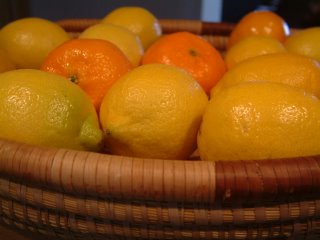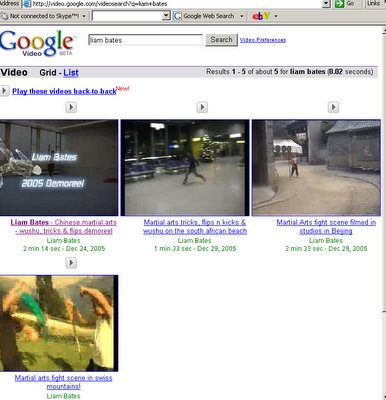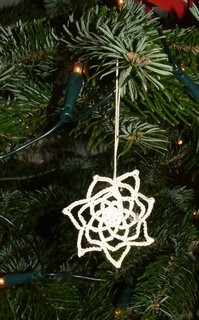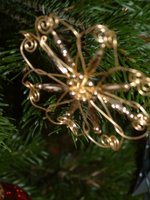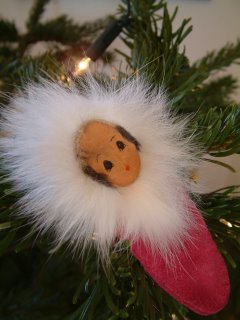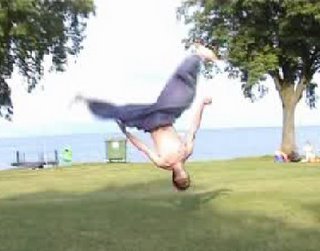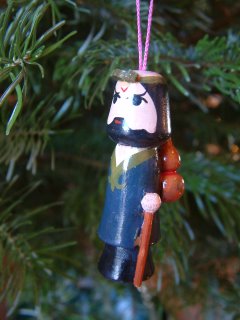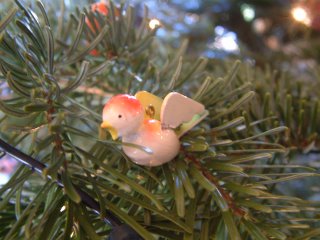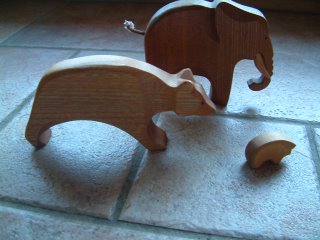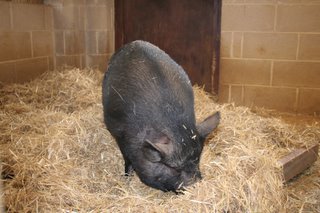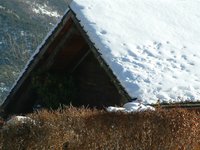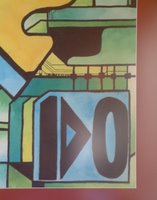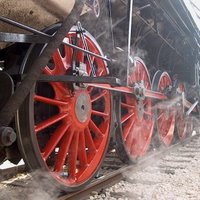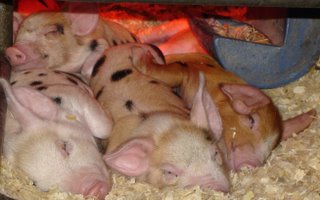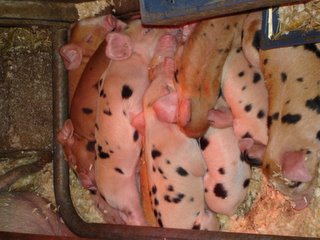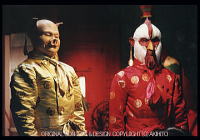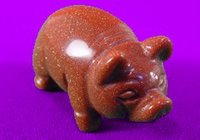The Rainbow and Truffle Snuffler
printable version at www.zidao.com/rainbowsnuffler.doc
It was the year 1878. In the middle of France, the weather had been very hot and dry all summer. Winds blew and blew from the south, from Africa, from as far away as the Sahara, so that goats chewing on trees paused in wonder at the sand in their mouths.
Children rubbed the grit in their eyes and cried, and mothers stared, baffled, at the white grains that clung to their drying linens, washed with chunky bars of soap from Marseilles, in the south of France.
People and animals both turned in the direction of the warm winds and asked why. Why sand? Why so much heat? Why did it not rain?
People were restless. It was a summer of great movement, agreed the residents of a little village in the Charolais country, near the town of Macon. Travellers seemed to crisscross the country and even the world, passing through the village.
One of them, a woman from Australia named April, had decided to stay and she bought the big house at the bend in the road that had lain empty since Monsieur Dupont and his wife died childless. April fell in love with the fine golden stone of the house that looked out over a vast stretch of meadow and field, and whenever her eyes roamed over the several outlying buildings she dreamed and planned. She replaced fallen bits of wall and roof, and once again a fire roared in the giant breadmaking ovens. Outside, a sleek chestnut horse sighed and snorted and looked for shade. A slender pink pig with spots used his snout to dig holes in the ground, seeking coolness. With the heat, these soon grew warm and the little pig began to dig again. Soon, other animals noticed, the pig had become an expert at digging holes.
 Neighbors were curious, but no one knew what April was plotting, unless it was her beautiful young black cat, Jean-Clawed. She had found him whimpering in a ditch her first day in the Charolais countryside, homeless and alone, it seemed. She adopted him.
Neighbors were curious, but no one knew what April was plotting, unless it was her beautiful young black cat, Jean-Clawed. She had found him whimpering in a ditch her first day in the Charolais countryside, homeless and alone, it seemed. She adopted him.
Jean-Clawed grew into a fine cat who could sit perfectly still for hours or move like lightning if a mouse caught his fancy. April spoke to him as if he were her best friend. His command of English and French was excellent. He silently agreed with her remark that animals should not be treated as humans: they should be appreciated for what they are.
As a result, he spoke to other animals, convinced, as was April, that animals do not understand human words, but they like the music of them. He considered himself the exception to this rule.
 The pig cocked its head on one side and stared at the cat from small round eyes whenever the sleek black creature spoke. One day Jean-Clawed, in his drawling voice, told the pig that the porcine race was known, at least in France, for its ability to sniff out truffles. The pig listened carefully, but did not say a word. The cat continued.
The pig cocked its head on one side and stared at the cat from small round eyes whenever the sleek black creature spoke. One day Jean-Clawed, in his drawling voice, told the pig that the porcine race was known, at least in France, for its ability to sniff out truffles. The pig listened carefully, but did not say a word. The cat continued.
“They are very valuable. People like to impress other people by using them in cooking. Brownish-black truffles. They grow under walnut trees.”
The next day the pig was seen digging several holes around a little walnut tree. Jean-Clawed frowned. Perhaps the pig had understood, after all.
A strange man arrived one day.
“Madame, I am a sculptor from Paris. Your friend Monsieur Barry said I would be welcome at your home.”
He was. He was too welcome, thought Jean Clawed. The sculptor stayed for three months, on his way to Italy. He complained that no one understood his work except the Italians, who loved bodies. He ignored the cat, as well as the pig, Snuffle, and even the horse, Monsieur Cheval. He whined and demanded attention and fine meals. He wondered about truffles in the area, but April said she had no idea if there were any.
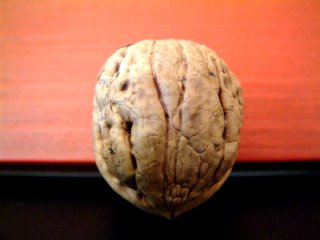
The next day the little pig was digging with great determination under the young walnut trees that had begun to bear fruit only recently.
The sculptor suddenly became silent and retired for hours to the room on the top floor where the dry winds were less hot, and the sun came in at soft angles. He shut the door behind him.
It was a Saturday, market day, and April had gone to town with Le Cheval, as Jean-Clawed liked to call him. No “Mister” or other fancy title was necessary for a horse, although when he pointed this out to Le Cheval the other gave him a long, strange look and some minutes later he attempted to step on the black cat. Mouse-chasing kept you in shape, Jean-Clawed thought later, when his heart had calmed down from the close call. April said he had nine lives, and this was only his first, but there was no reason to rush on to number two.
“There you are, little kitty,” purred the sculptor who appeared out of nowhere. Before Jean-Clawed had time to make it clear he detested cuteness, the artist had swooped him into his arms and they were leaping up the stairs, with the sculptor laughing.
“Today, I will show you what I can do! And you will sit still for me! You are so very good at that.”
Jean-Clawed was startled to see heads, legs, arms, bottoms and other parts of humans, in wood, or made of some white stuff, and sometimes in metal, sitting or lying around the room.
“Ha! But you think I sculpt only humans! No, no M. Rodin will soon be famous for that, but he – and he is me – knows how to show the world that a silent, still cat holds, like a beautifully coiled spring, the promise of all of the magnificent, wild energy of the animal kingdom. Ha!”
That was the day the two struck up a working relationship, if not a friendship. The cat sat, the sculptor sculpted, while April mended buildings and snipped rosemary and tarragon from the sunny corner of the garden to add to the roasting chicken. The pig watched her, thoughtfully, and then made a tour of the walnut trees further away from the house.
M. Rodin’s visit came abruptly to an end. One morning he refused his coffee and insisted that April see something he had placed in front of her new window, where the light now streamed in. It was a magnificent black cat, perfectly still but you knew it could move any moment, and then very quickly. Jean-Clawed knowingly marched over and sat down in front of it, taking up the same pose.
“For you, mon amour…” the sculptor cooed to April. And then he was gone, never to be seen again. April was silent for some days, and ate only salads. Snuffle, the pig, lay down in the shade and refused to move.
“I’ve had word from Paris,” she said to Jean-Clawed one morning. “Our friend Rodin is creating an uproar in the city, with one of his naked metal people. He calls it The Age of Bronze.” She laughed, and that evening there was a roast chicken. The pig followed her around happily while she tidied the garden and pinched coriander tips.
A few days later a traveller arrived.
“I am M. Mouchout, friend of M. Barry in Paris, who insisted I must see you on my return from Algeria. I have been there showing the French Academy of Science that we can track the sun and use its warmth to replace coal, an extraordinary advance for humanity.”
He smiled at her and continued talking, about his friendship with the Emperor Napolean III, who had been the first to understand the importance of his solar motor. He told April about the machine he had made that tracked the sun, in his courtyard in Tours, before the Academy invited him to do more work in Algeria.
“There,” he said and Jean-Clawed felt the word stand up proudly on its own, “I connected it to a steam engine and produced one-half horsepower.”
April laughed and said, pointing at Monsieur Cheval, “I still prefer the whole horse, I think.”
 While he recovered from the heat of Algeria, even hotter than Charolais that summer, a process that took some weeks, April built up the house to its former glory, encouraged the garden to produce marvelous vegetables and fruits, and she cooked meals that Mouchout said would keep him there forever. Jean-Clawed, bored by the man’s lectures on the power of the sun, learned to yawn and yawn, until April told him not to be rude. Foolish woman, thought the cat, tiring at last of the endlessly warm weather and blue skies. It doesn’t take that much to see the power of the sun.
While he recovered from the heat of Algeria, even hotter than Charolais that summer, a process that took some weeks, April built up the house to its former glory, encouraged the garden to produce marvelous vegetables and fruits, and she cooked meals that Mouchout said would keep him there forever. Jean-Clawed, bored by the man’s lectures on the power of the sun, learned to yawn and yawn, until April told him not to be rude. Foolish woman, thought the cat, tiring at last of the endlessly warm weather and blue skies. It doesn’t take that much to see the power of the sun.
“I heard them say, down the road, that the best truffles are found under older trees,” he said to Snuffle one day. The pig looked at him long and hard. Jean-Clawed had been known to say things just to tease. But that afternoon the pig was seen in the distance, walking around and around the old walnut tree, then a chestnut tree.
Mouchout, too, left abruptly one day, saying the world was waiting for him in Paris. April said little, but some time later she picked up the cat and showed him a letter from a friend, who said M. Mouchout had won a prize in Paris. M. Mouchout himself sent a card soon after, but it talked only about the magnificent solar structure with 72 mirrors that he was building. April did not bother to reread it.
It was only the next day that an Englishman, Mr. Muggeridge, came by, saying that he had met a curious sculptor in Paris, where they had argued about whether animals were more beautiful when they were still or moving. This Mr. Rode-In, he said, insisted that Muggeridge call on his delightful friend April, who had a horse and a cat and a pig. Mr. Muggeridge was looking for animals to photograph.
Jean-Clawed wondered what that meant, but they all found out the next day when Muggeridge insisted that the animals run, leap, and in general spend the day moving so that he could set up a contraption in front of them that would give him pictures of them. The horse galloped twice, then sat down and refused to listen to anyone. The pig ran round and round the walnut trees in a state of great excitement, and then collapsed in an overheated heap.
The cat was horrified to discover that every time Muggeridge threw a mouse his way, he ran after it – he couldn’t stop himself, even though he did not like the man or his machine and he particularly did not like the way the Englishman eyed April. The Frenchmen who visited had acted as if they loved her and her food and her house, if not necessarily her animals. This man ate her food without a thought, preferred her animals on a piece of paper, and as for her . . . Jean-Clawed knew more about lovemaking than this Muggeridge fellow, that was clear.
A week after his arrival he was complaining that the horse could not hold a candle to the racetrack horses that were making his photos famous in America. Why would a horse hold a candle, wondered the cat? A tired traveller called at the door, and handed a card to April. He was not a friend of M. Barry, in Paris, but of his brother’s wife’s cousin. He had just been summoned to Paris to set up the country’s first weather forecast station, to be called a meteorology department. The government was giving him $12,000, a princely sum but it would all be needed for the equipment and space, so he was travelling as cheaply as possible.
“And that is very good,” he said with enthusiasm, over sautéed pigeon that evening, with his hostess and her English guest. “It has forced me to see the impact of this terrible heat on our country, on the crops and the animals. I have been measuring water, or the lack of it everywhere, and wondering why we have no rain.”
Muggeridge barely listened but April smiled at the guest and said, “You must ask the pigs, for they always seem to know what the weather’s impact will be on the truffles.” The man laughed, but he turned around and went out to look for the pig. They were seen in the shady corner of the garden, five minutes later, sitting side by side, quietly, watching the world.
 When the visitor came in for tea he asked about the photos of the horses and stopping action and he studied Muggeridge’s pictures carefully. He looked at the man without a word.
When the visitor came in for tea he asked about the photos of the horses and stopping action and he studied Muggeridge’s pictures carefully. He looked at the man without a word.
Two things happened the next morning, a morning that always stood out in Jean-Clawed’s memory. The first was that Snuffle went out early, led by the visitor, and they walked around several trees together, then without a word from either, Snuffle began to dig. The second was that the guest returned to the house and told Muggeridge to leave, immediately. The photographer, enjoying plum jam on a slab of freshly baked bread, still warm from the oven, protested.
“I know you were tried for murder,” said the visitor softly. “I know you were let free, but I also know you call yourself Muybridge and that we can’t trust you. We want two things in France this summer, rain, and love. You can’t offer us either.”
A few tense words later and the photographer was gone. The guest and April went out towards the walnut trees, where the pig’s little hooves were flying. They paused to pick up the black cat and the guest rubbed his forehead. How did he know a cat would like that, wondered Jean-Clawed?
The horse joined them and they all sat in the shade of the old tree and saw the French miracle of 1878 unfold. For there, before their eyes, the pig was digging out a streamer of silky colors, ripples and waves and shimmery bits of red, orange, yellow, green, blue, indigo, violet, always in that order. It grew longer and longer, floating and dipping in the air.
April was the first to speak, very softly.
“But it’s a rainbow!”
“Mmm, Snuffle knew it was there. I told Snuffle that the terrible storm we had last spring was so strong it apparently buried the rain, and with the rain, the rainbow that moves around from one part of our sky to another. Snuffle was not very interested until I pointed out that without the rain, it would continue to be hot. And with that heat and dryness, you might never have the truffles you want for your wonderful meals.”
But by this time the rainbow had risen high above them, and clouds that had been building on the horizon had come closer and grown very dark with rain. Drops splashed and hit them wet and hard. Soon they were all running faster than even Mr. Muybridge, the famous stop-action photographer, could have wished, laughing and singing the rain’s praises.
And to this day, all the rainbows in France have one end in a little meadow not far from Charolles, although no one has been able to find it since 1878. And since that year, French meteorologists have been trying to prove, with little success, to other weather people around the world that rainbows begin and end in France. April’s house now has a woman named June in it, who might be one of her descendents, and down the road is a black cat called Jean-Clawed, who claims to be well into his nine lives.
